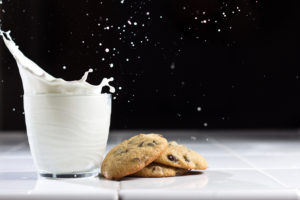Could you live in a world without beer? For at least 2 billion people, the answer would be a resounding “NO!” Many alcohols, like beer, exist because of a microorganism known as yeast, which uses fermentation of sugars to make breads rise and create alcoholic beverages. Now, yeast are poised to transform the way we think about other foods, thanks to scientists working in the innovative new field of “cellular agriculture” (coined by Isha Datar, CEO of New Harvest).
Why do we need this new field? The answer to this question lies in the costs of traditional agriculture. The Food and Agriculture Organization (FAO) of the United Nations has found livestock farming in particular to be responsible for 18% of greenhouse gas emissions, which is more than is generated by all automobile use. One individual cow can eat an average of 24-28 pounds of hay per day in a farm, and in some places, massive deforestation provides land for cows to graze. These methods contribute to significant water pollution and soil erosion, and greatly affect the habitats of non-livestock animals. Much of this damage can be stopped and even reversed by finding a new way of feeding the human population in a sustainable manner.

Cellular agriculture seeks to accomplish this by recreating animal-derived foods and materials by engineering yeast and culturing animal cells to replicate taste and texture. Scientists have been increasingly successful at identifying the key proteins and chemical components that our taste buds recognize in a variety of foods and drinks. One example of cellular agriculture is the creation of the animal-free milk, Muufri. Scientists identified 6 proteins and 8 fatty acid chains that are essential to the taste and ‘mouth feel’ of milk. They were able to successfully create yeast strains that produce all of these individual components, and are currently perfecting different formulas that mimic the milk we get from cows, goats, yaks, and other animals. In short, we can have dairy milks without the need for dairy animals!
Cellular agriculture is not limited to food products. For instance, the company Bolt Threads transforms yeast cells into tiny machines that can produce silk fibers, which can then be spun into fabric. Other companies such as Modern Meadow are working to build an efficient factory system to produce synthetic animal leather products. Still other companies are expanding cellular agriculture to synthesis of plant products, such as BioLoom with lab-grown cotton, demonstrating the versatility of cellular agriculture to provide sustainable solutions for materials in high demand.
While these are all exciting developments, what makes cellular agriculture superior to our present agriculture systems? The answer is in the philosophy of cellular agriculture itself. Deconstruction of animals into individual components is much more inefficient than building these materials from the ground up with engineered yeast and other synthetic approaches. By using yeast and tissue culturing methods, we can sustain the human population using far less resources than is currently thought possible, using materials and organisms already approved by the FDA. Last but not least, the emergence of cellular agriculture will greatly alleviate the depletion of land habitat that is required for traditional farming methods, allowing for healthier ecosystems. All these factors translate to a more sustainable future for the planet and our descendants.
Edited by Kathryn Pietrosimone.